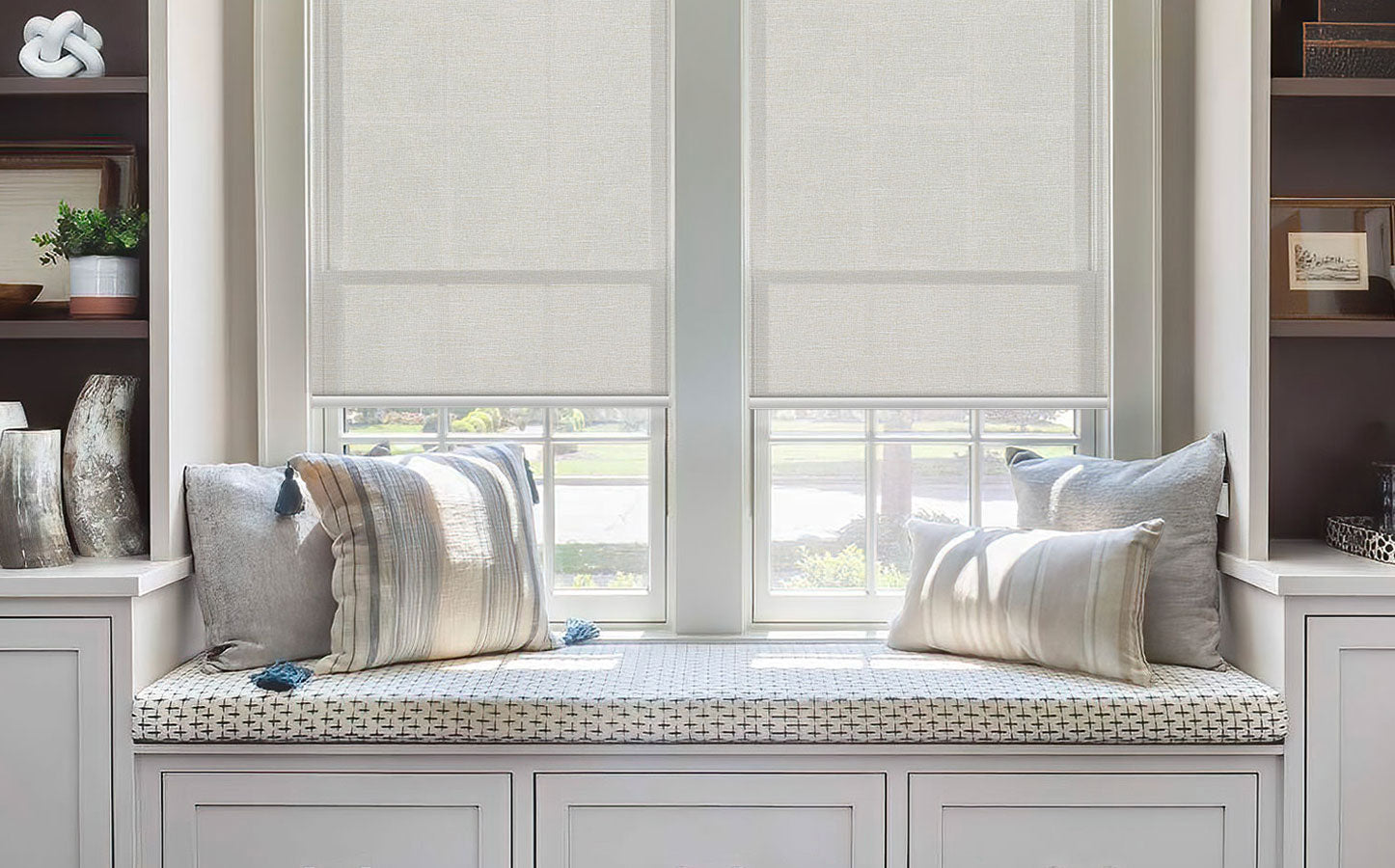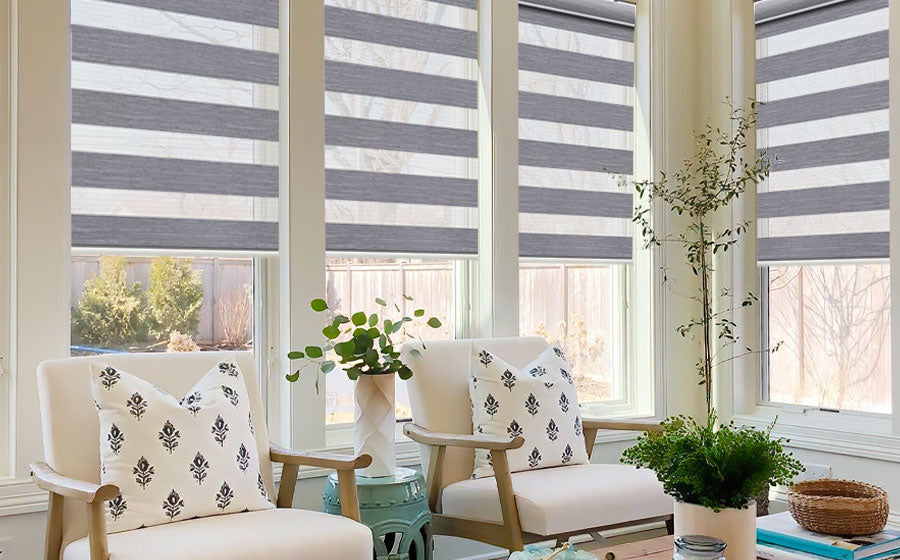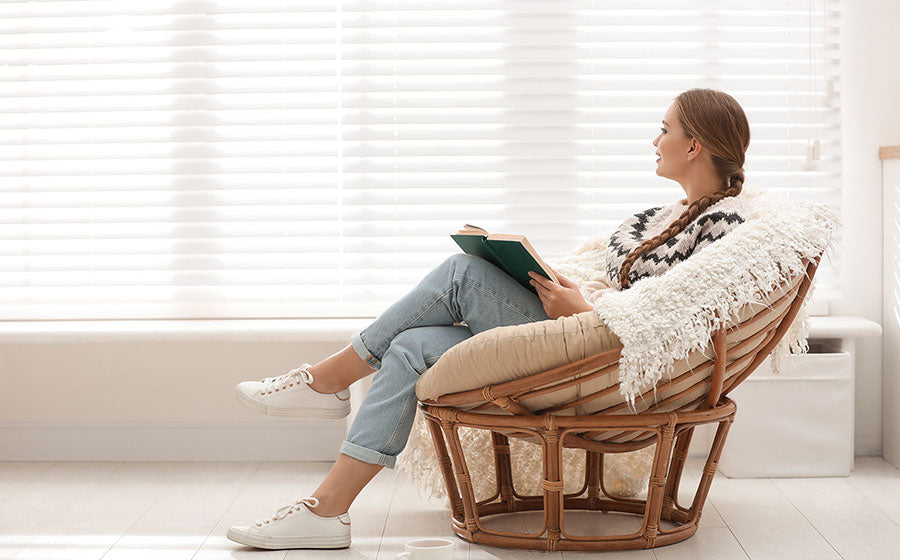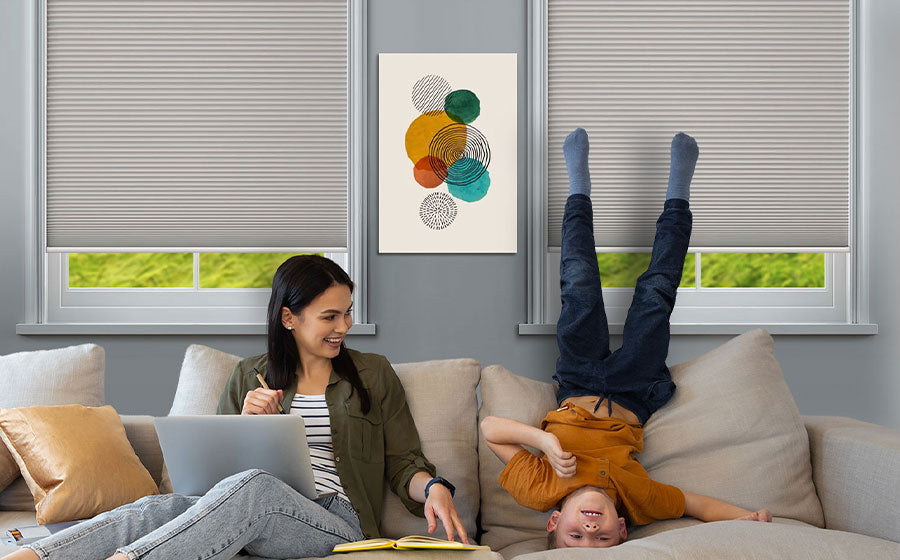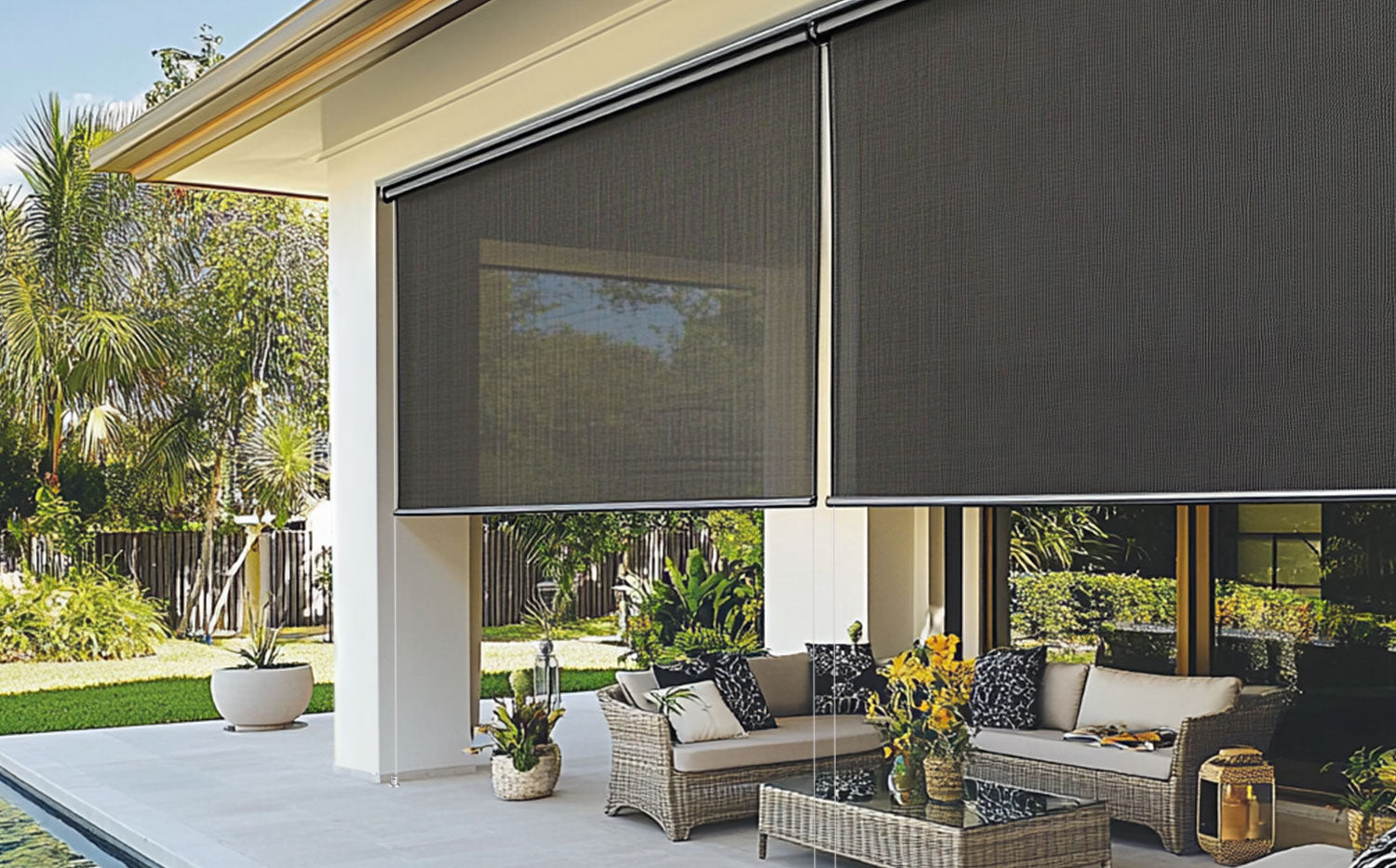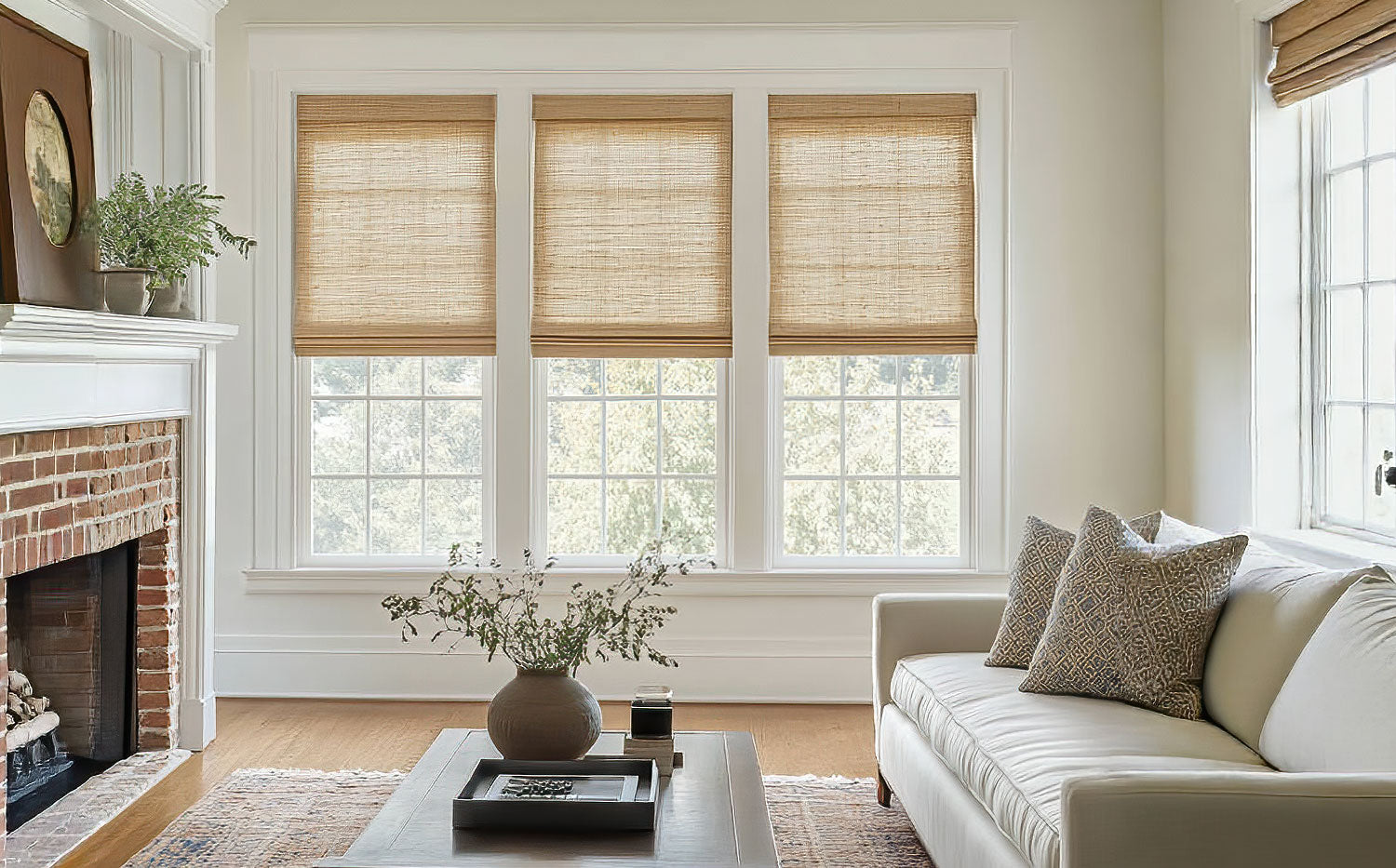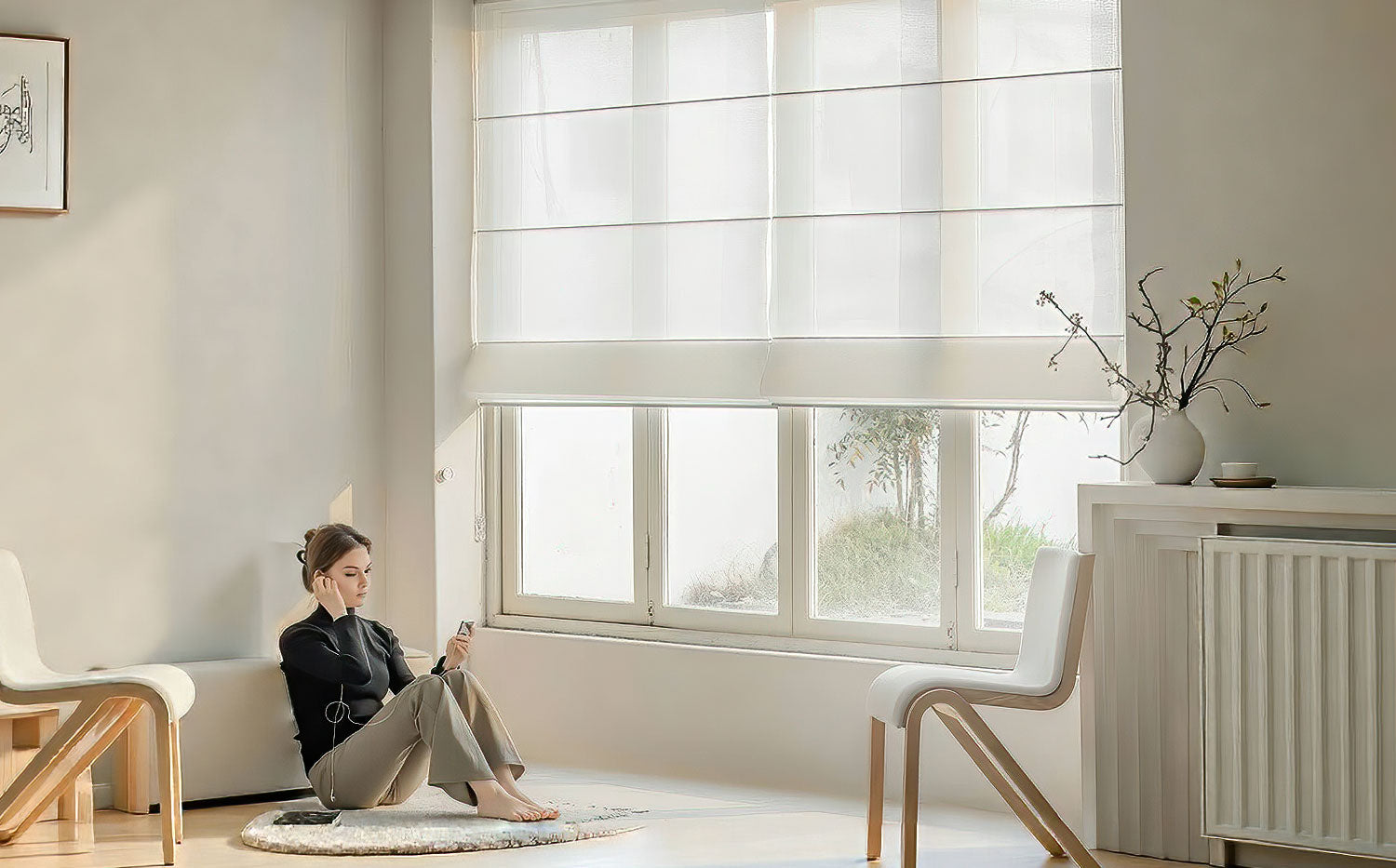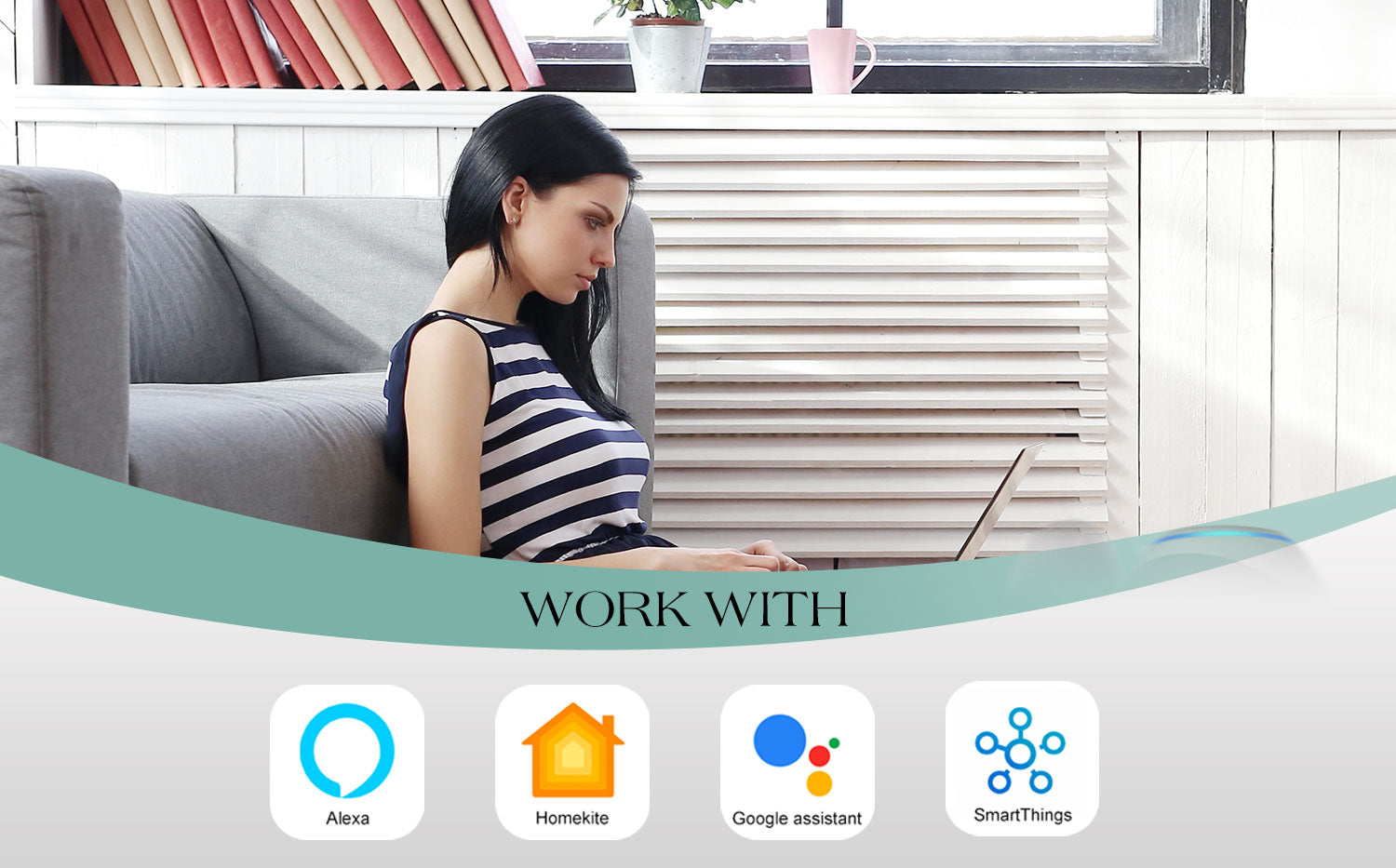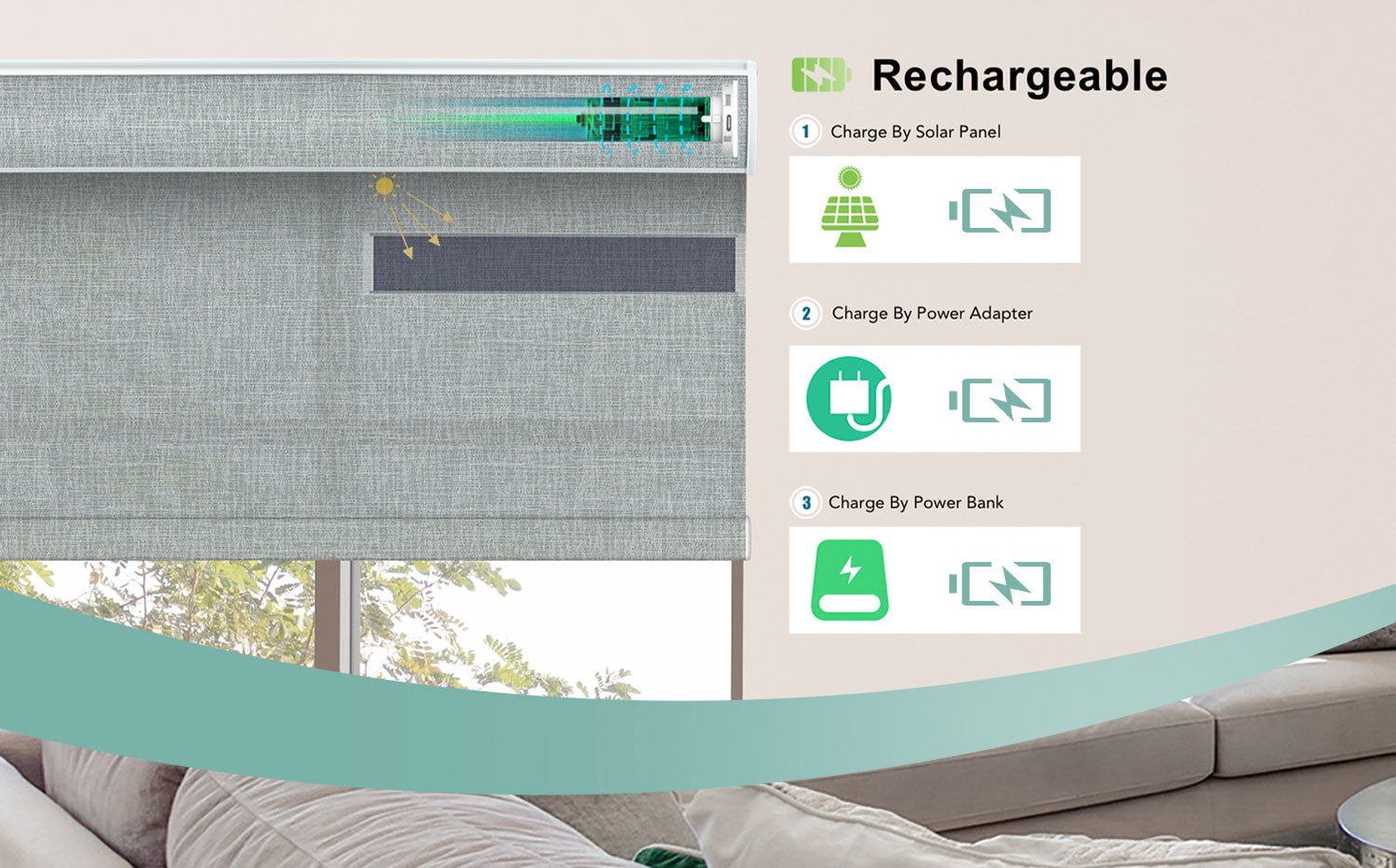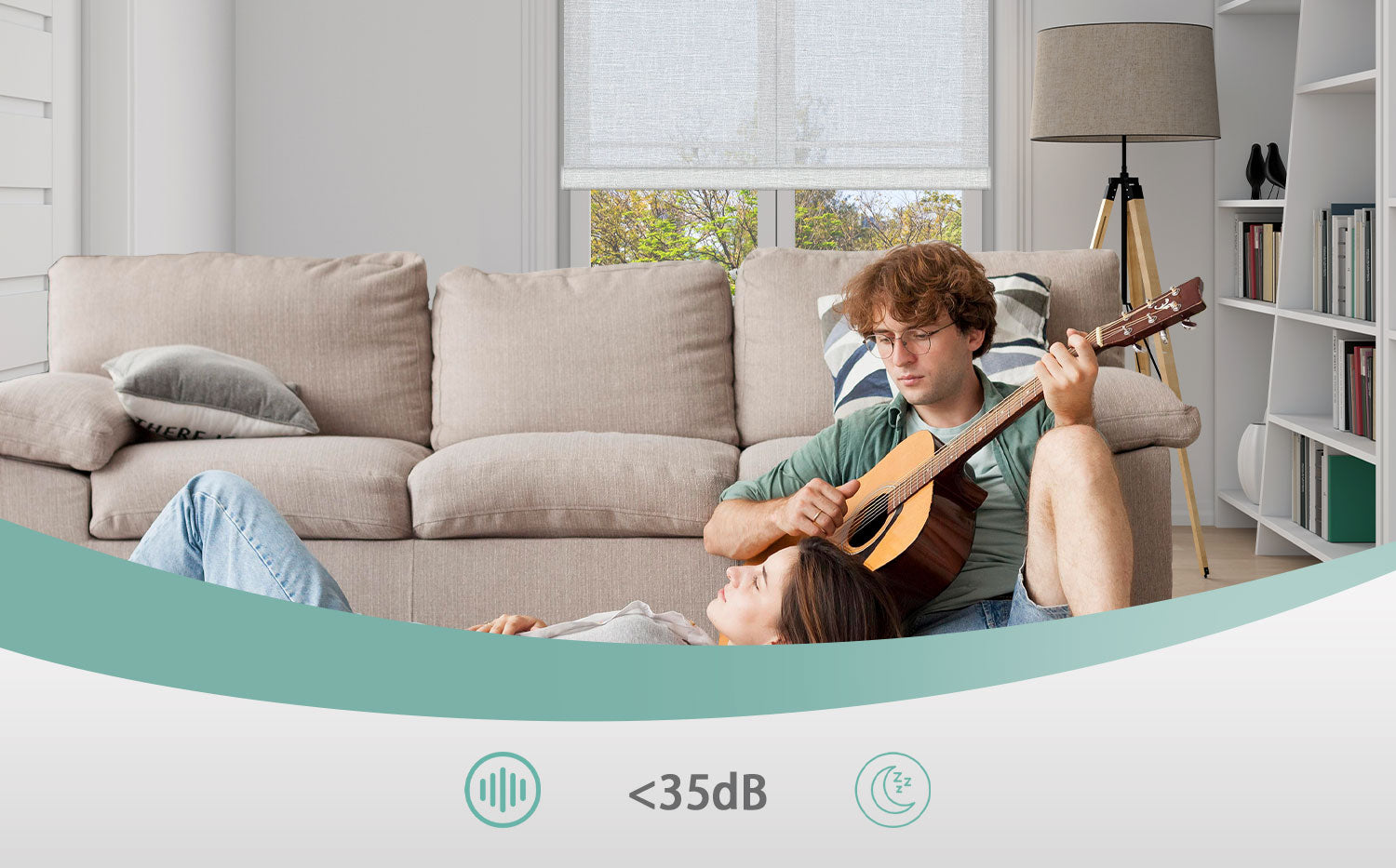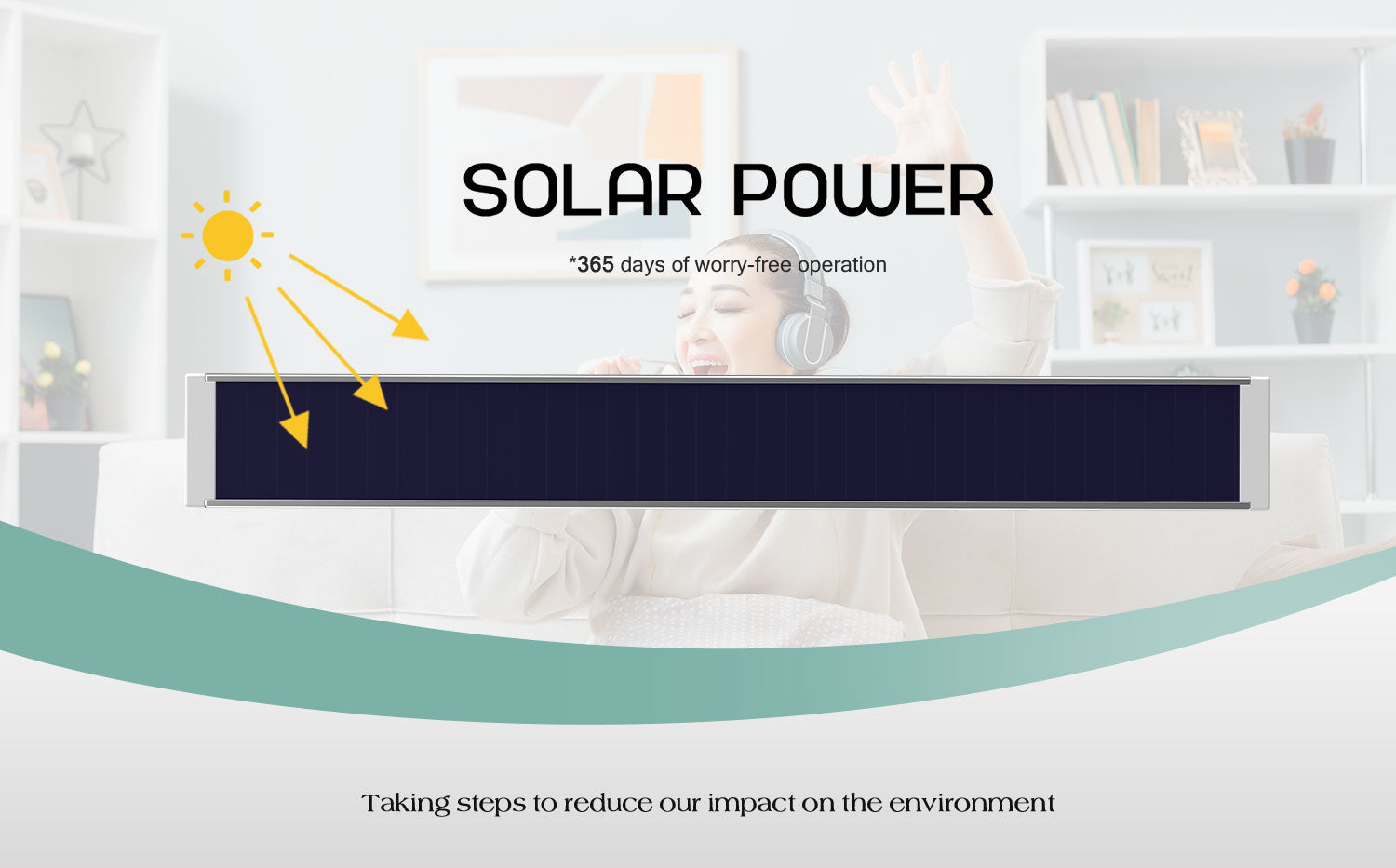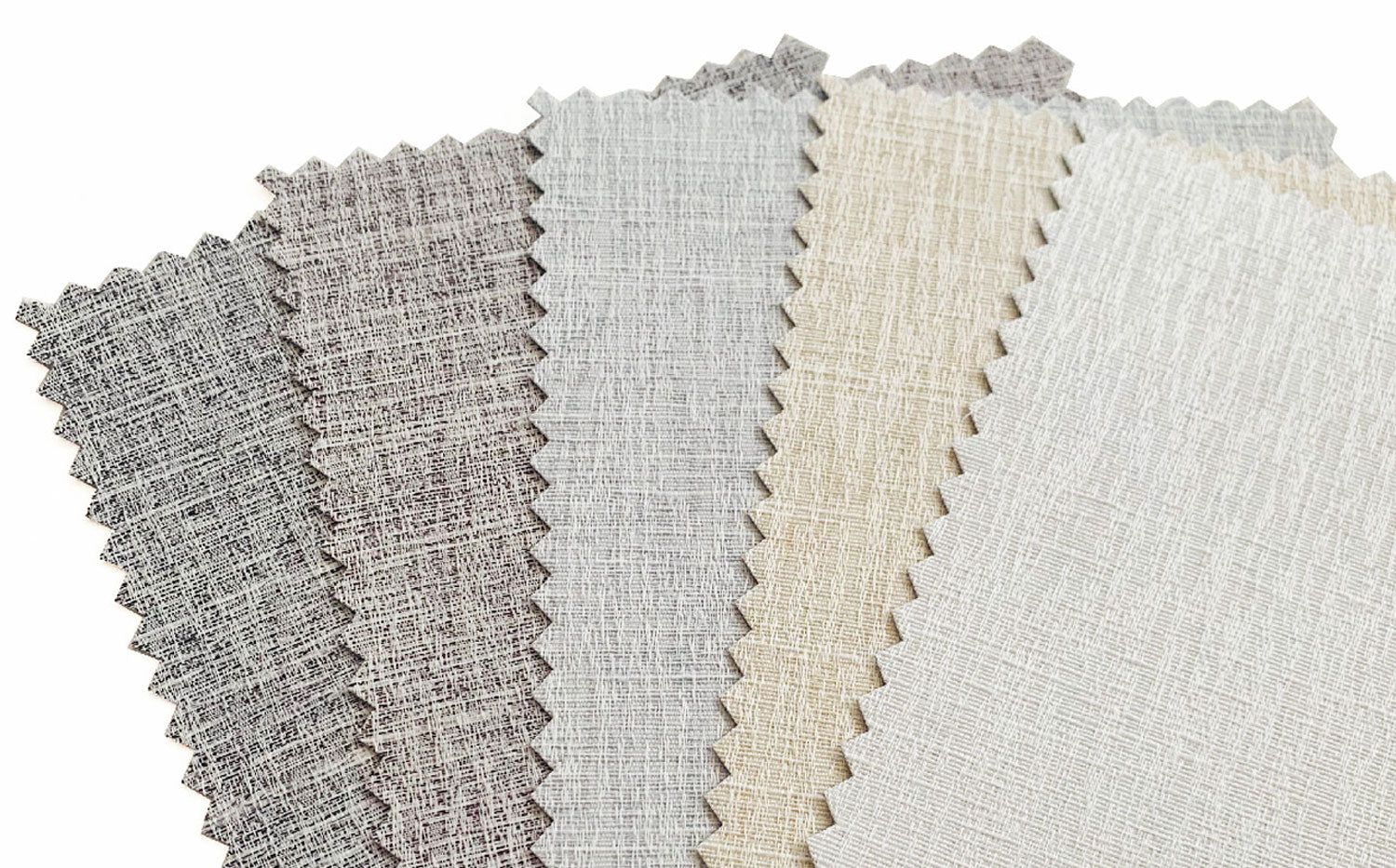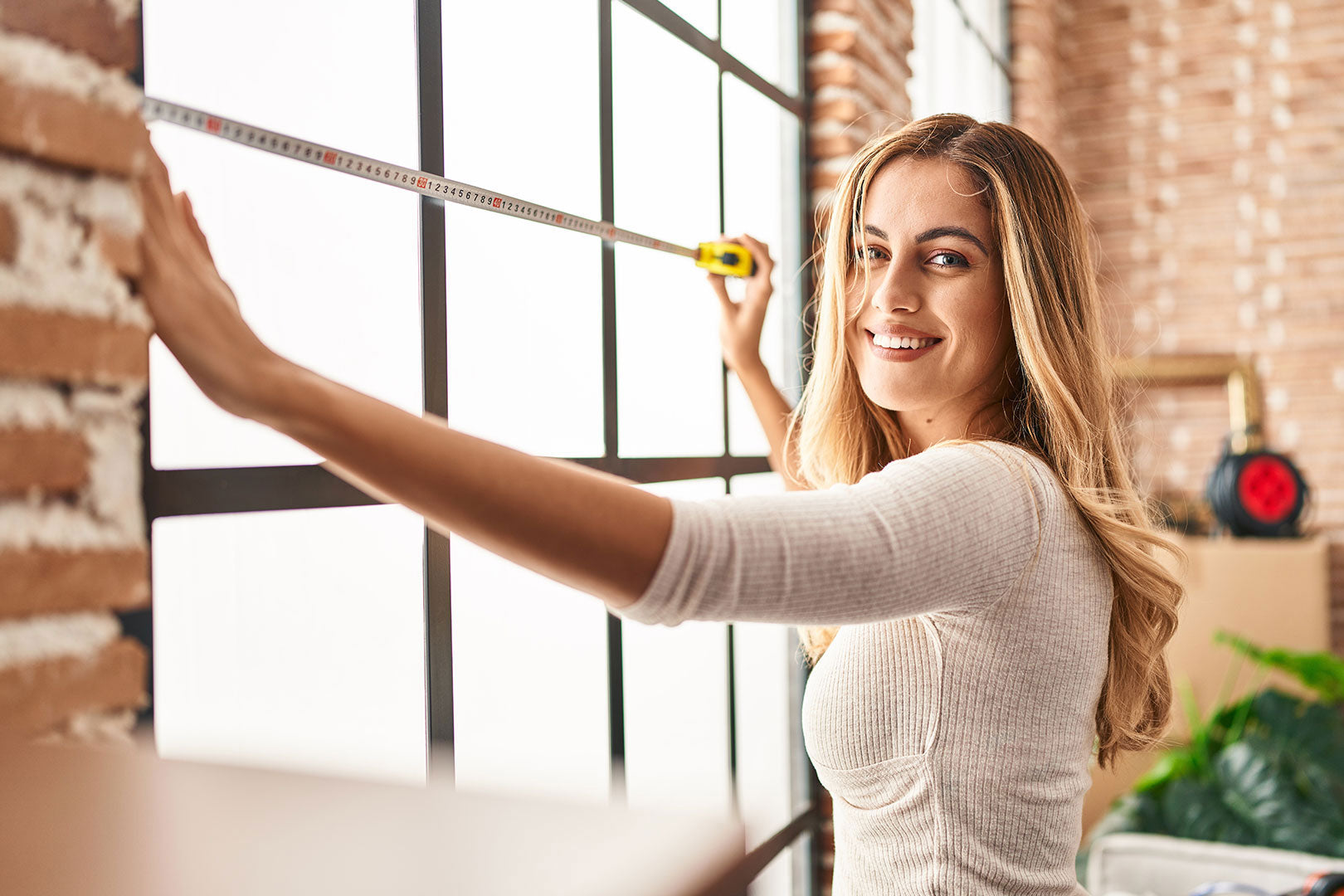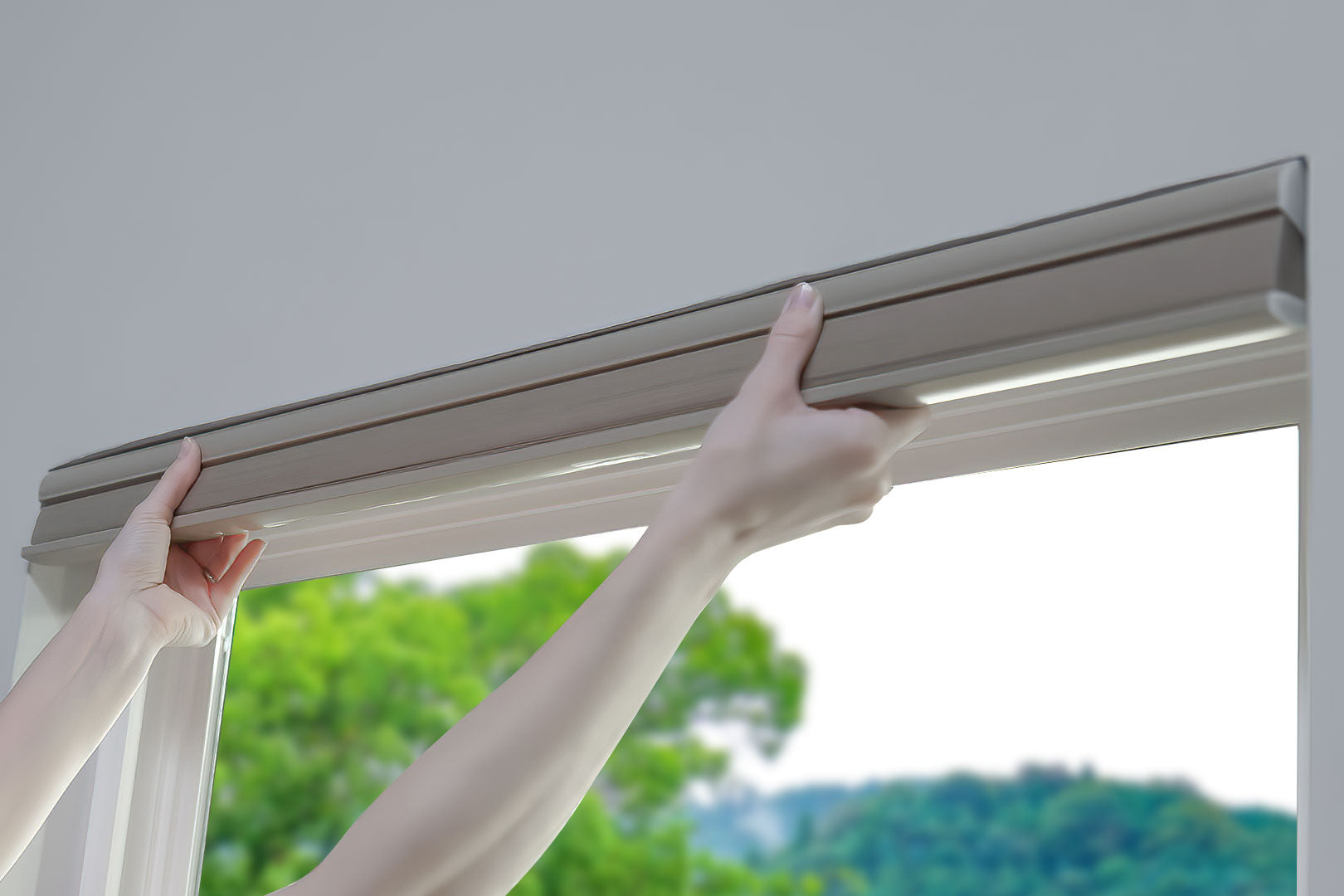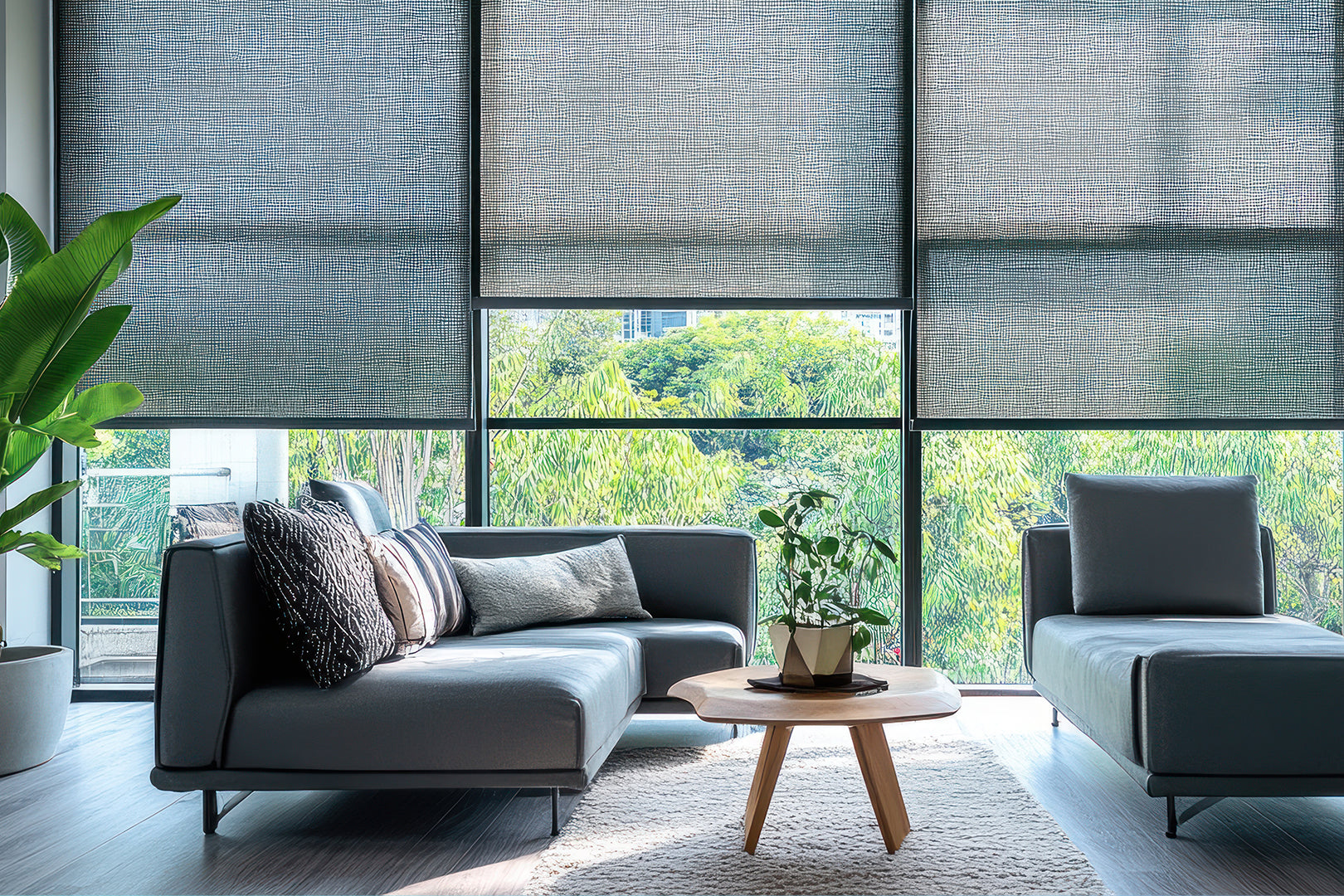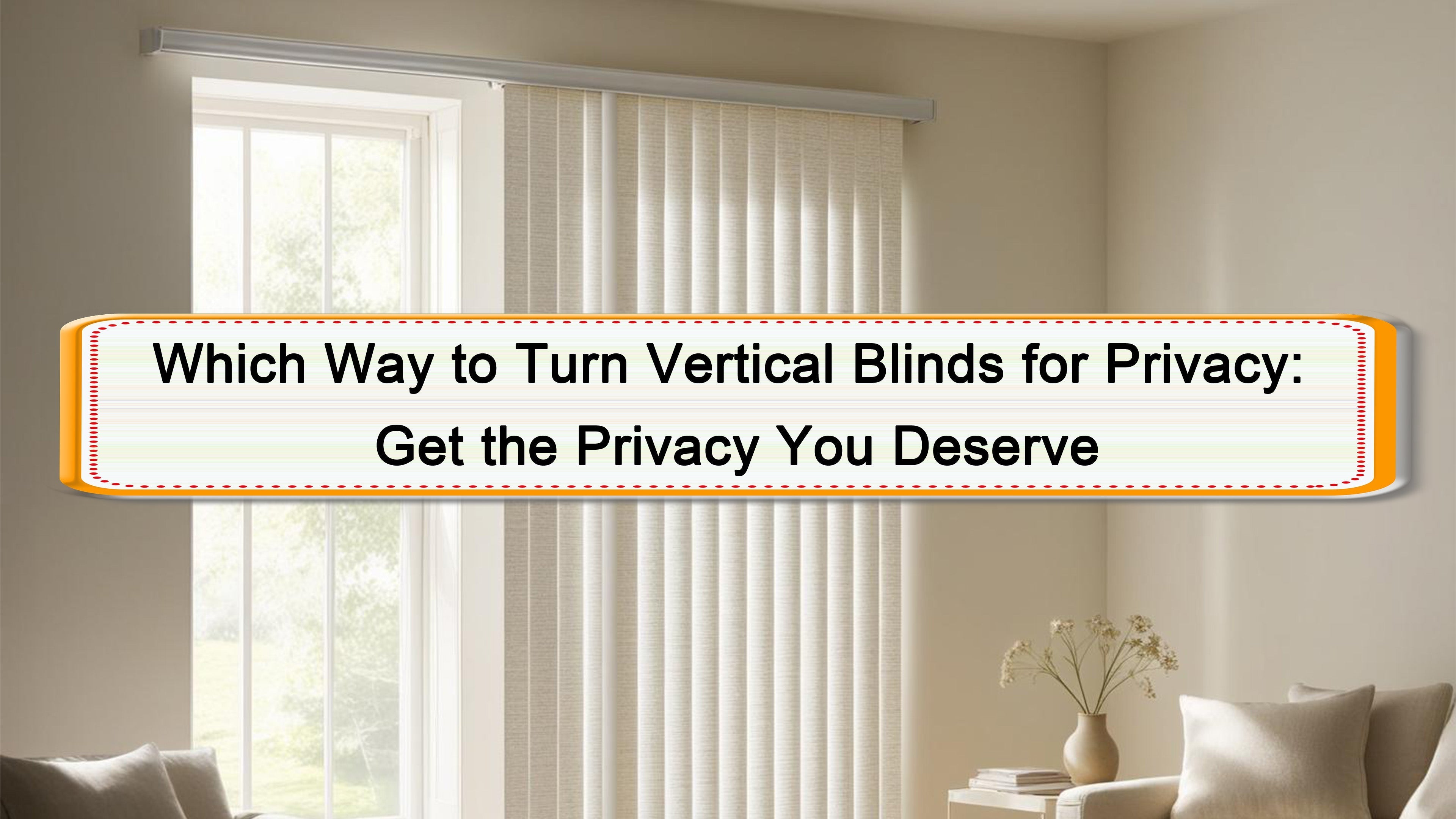 Ever feel like your neighbors have a front-row seat to your life? You’re not alone. Many struggle with finding the right balance between natural light and privacy, especially with vertical blinds. It's frustrating to think you have privacy when you actually don't.
Ever feel like your neighbors have a front-row seat to your life? You’re not alone. Many struggle with finding the right balance between natural light and privacy, especially with vertical blinds. It's frustrating to think you have privacy when you actually don't.
This guide cuts through the confusion, showing you exactly which way to turn those slats for maximum seclusion. Here's what we'll cover:
● Determining the correct tilt direction for privacy.
● Maximizing light control while maintaining privacy.
● Exploring options for enhanced privacy, such as blackout blinds.
BlindsMagic gets this struggle. We're all about creating comfortable homes. We have various options, from basic to smart blinds, to help you get the privacy you want.
Determining the Correct Tilt Direction for Privacy

So, you're standing there, staring at your vertical blinds, wondering which way is actually the right way. It's a common dilemma. Most folks assume a simple turn one way or the other does the trick. But there's a bit more to it if you want real privacy. Let's break it down.
The key is to think about the angle of the slats. You want them tilted away from the direction of the unwanted view. Imagine someone standing outside your window. If you tilt the slats so they're angled downwards and away from that person, they'll mostly see the back of the slats, not into your home. It’s like creating a visual barrier.
Here's a quick reference:
|
Situation |
Tilt Direction |
Reasoning |
|
Daytime Privacy |
Downwards and towards the inside of the room |
Lets light in, blocks view from outside. |
|
Nighttime Privacy |
Upwards and towards the inside of the room |
Blocks view of the well-lit interior from outside. |
|
Higher Floors |
Less drastic tilt needed during the day, reverse tilt at night still vital |
Angle of view from below provides some natural daytime privacy. |
●
Daytime Privacy: During the day, tilt the slats downwards and towards the inside of your room. This allows natural light to filter in while blocking the view from outside. It’s a win-win.
● Nighttime Privacy: At night, when it's dark outside, and lights are on inside, reverse the tilt. Now, angle the slats upwards and towards the inside of your room. This keeps your well-lit interior hidden from prying eyes.
Pro Tip: If you live on a higher floor, you might not need as much of a drastic tilt during the day. The angle of view from below is different, offering some natural privacy. But at night, the reverse tilt is still essential.
It's all about playing with the angles and observing the view from both inside and outside. Walk outside and see for yourself. Adjust until you get that sweet spot of light and privacy. This hands-on approach is the best way to really get it right. It’s also a good way to test your blinds' current setup. Are they providing the privacy you think they are?
This is where BlindsMagic’s design comes in handy. Our blinds are made for easy adjustment, so you can quickly switch between daytime and nighttime privacy settings. Plus, with options like our smart blinds, you can even automate this process. More on that later.
Maximizing Light Control While Maintaining Privacy
Now, let's talk about fine-tuning those blinds to get the perfect balance of light and privacy. It's not just about blocking the view; it's about creating a comfortable and inviting space. You don't want to live in a cave, right?
The angle of the slats directly impacts how much light enters your room. A slight adjustment can make a big difference.
● Bright, Sunny Days: Tilt the slats almost completely closed but not quite. This diffuses the harsh sunlight, preventing glare while still allowing some natural light to filter through. Think soft, ambient light.
● Overcast Days: On cloudy days, you can open the slats a bit more. This lets in more of that diffused light without sacrificing privacy. You can also slightly angle the slats upwards to bounce more light off the ceiling, brightening the room.
● Strategic Adjustments: Consider adjusting blinds in different rooms based on the time of day and the sun's position. For instance, you might want more light in your living room during the afternoon but more privacy in your bedroom.
Imagine you're working from home. You need natural light to stay focused, but you don't want the glare on your computer screen. You can block the direct sunlight by slightly tilting the slats downwards while still enjoying a bright and productive workspace.
Pro Tip: Consider the material of your blinds. Lighter-colored blinds will allow more light to filter through even when tilted closed, while darker colors will block more light. BlindsMagic offers a wide range of materials and colors, so you can choose the perfect option for your needs. We also offer light-filtering fabrics that are designed to diffuse light beautifully while maintaining a good level of privacy. They're a great middle ground if you want a lot of light but don't want to sacrifice privacy.
Adjusting your blinds for light and privacy is a bit of an art. It’s about finding what works best for your space and your needs. But with a little experimentation, you can create a comfortable and private environment you'll love. Plus, BlindsMagic's easy-to-use designs make it easier than ever.
Exploring Options for Enhanced Privacy, Such as Blackout Blinds

Sometimes, just tilting the slats isn't enough. You might need serious privacy. Maybe you live on a busy street, have close neighbors, or just prefer complete darkness when you sleep. That’s where enhanced privacy options, like blackout blinds, come into play.
Blackout blinds are designed to block out nearly all light, creating a completely dark and private space. They're made with special opaque materials and often have features like side channels or tight weaves to prevent light from seeping through the edges.
Here’s why you might choose blackout blinds:
● Bedroom Bliss: Perfect for bedrooms, blackout blinds ensure a restful sleep by blocking out streetlights, early morning sun, and any other unwanted light.
● Media Room Magic: Create a true cinematic experience in your home theater by eliminating glare and reflections on your screen.
● Shift Work Sanity: If you work night shifts and sleep during the day, blackout blinds can help you create a dark and conducive sleep environment.
● Ultimate Privacy: For those who prioritize absolute privacy, blackout blinds offer the highest level of seclusion.
While blackout blinds offer maximum privacy and light control, they do have a trade-off. They block all light, so you’ll need artificial lighting even during the day. This might not be ideal for everyone.
● BlindsMagic’s Blackout Options: At BlindsMagic, we offer a variety of blackout vertical blinds to fit your needs. Our blackout fabrics are OEKO-TEX certified and are made without harmful chemicals. We also offer different colors and textures, so you can find the perfect match for your décor. Even better? Some of our blackout options are available as smart blinds.
● Smart Blackout Blinds: The Best of Both Worlds: Imagine this: you can schedule your blackout blinds to close automatically at sunset and open at sunrise. Or, you can control them with your voice or smartphone from anywhere in your house. That's the power of BlindsMagic’s smart blackout blinds. You get complete darkness and privacy when you need it, and effortless control at your fingertips.
Choosing the right level of privacy is a personal decision. If you value complete darkness and maximum seclusion, blackout blinds are the way to go. And with BlindsMagic’s options, you can get the perfect blend of style, function, and convenience.
How to Turn Blinds for Privacy at Night
Daytime privacy is one thing, but nighttime privacy is a whole different ball game. When the lights are on inside, it's like putting your life on display for the world to see. Luckily, adjusting your vertical blinds for nighttime privacy is simple. It just requires a slightly different approach than your daytime setup.
The key difference at night is that the light source is inside your home. This means you need to reverse the tilt you use during the day.
Here's the breakdown:
● Reverse the Tilt: Instead of tilting the slats downwards and inwards (like you do during the day), you need to tilt them upwards and inwards. This directs the light upwards and away from the window, preventing people outside from seeing in.
● Think of a Shield: Imagine the slats are creating a shield against the outside world. You want that shield to be angled so that it blocks the view from below.
● Test from Outside: The best way to ensure you've got it right is to step outside and check. Look at your windows from different angles. Adjust the tilt until you can no longer see into your home. This hands-on approach is the most effective way to guarantee your privacy.
If you have streetlights or other bright lights shining directly into your windows at night, you might need to adjust the tilt even further. You might also consider using thicker blinds or adding curtains for extra light blocking.
Get the Privacy You Deserve with BlindsMagic
Mastering the art of vertical blind adjustment is key to reclaiming your privacy and controlling the light in your home. From daytime diffusion to nighttime seclusion, a simple tilt can make all the difference. Remember, it’s about understanding the angle of the slats and how light interacts with them.
Here are the key takeaways:
● Tilt slats downwards and inwards for daytime privacy.
● Tilt slats upwards and inwards for nighttime privacy.
● Consider blackout blinds for maximum privacy and light control.
● Test your blind setup from both inside and outside.
At BlindsMagic, we understand that privacy is essential. That's why we offer a wide range of vertical blinds, from light-filtering options to complete blackout solutions, including smart blinds that automate the whole process. With BlindsMagic, you can create the perfect balance of light, privacy, and style in your home.
FAQs
Should blinds be turned up or down for privacy?
It depends on the time of day. During the day, tilt them downwards and inwards. At night, tilt them upwards and inwards. This blocks the view from outside while still allowing you some light control.
Which way should vertical blinds face for privacy?
For optimal privacy, the curved side of the slats should face outwards, away from the room's interior. This makes it harder for people outside to see in.
Which way to turn blinds so people can't see in?
Tilt the slats so they angle away from the direction you don't want people to see from. For daytime privacy, tilt downwards; for nighttime, tilt upwards.
Can my neighbors see me through my blinds?
It depends on the type of blinds, the angle of the slats, and the lighting conditions. If your slats are open or not angled correctly, it’s possible for neighbors to see in. Blackout blinds offer the most privacy.
Are vertical blinds good for privacy?
Yes, vertical blinds can be good for privacy if they are adjusted correctly. The right tilt and material choice are key. Blackout vertical blinds are excellent for maximum privacy.

